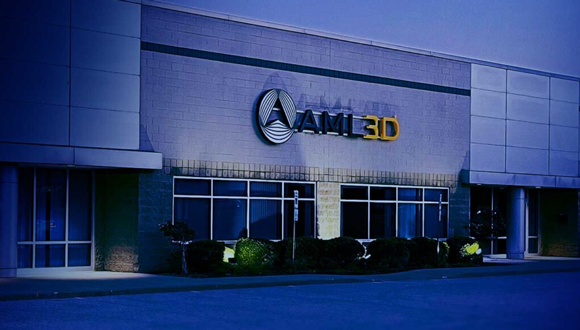In the government contracting process, public sector agencies often issue a letter of intent (LOI) in the lead-up to forging formal deals with specific companies for future delivery of goods and/or services. The agreements aren’t legally binding, but they do provide detailed outlines enabling the relevant stakeholders to begin taking any necessary, preliminary steps in planning their business operations.
The U.S. Navy has just issued an LOI to the Australian original equipment manufacturer (OEM) of wire additive manufacturing (WAM) systems, AML3D, indicating the maritime branch’s expectation that it will significantly ramp up its demand for AML3D’s offerings through 2030. Over the last few years, 3DPrint.com has frequently covered AML3D’s increasing foothold in the U.S. defense market. This growth trajectory includes AML3D’s opening of a technology center in Ohio, a development backed by an $8 million capital investment.
In the LOI that the Navy sent AML3D, the letter’s author, Matthew D. Evans, Deputy Program Manager for Ships, U.S. Navy, Maritime Industrial Base (MIB), specifically referenced the Ohio facility, as well as AML3D’s stated intentions to expand into a second location. Notably, Evans also mentions an “ongoing demand study” that the Navy is undertaking to forecast MIB demand through at least 2030. One finding from the study thus far is that the Navy expects to need at least 100 new metal 3D printing systems, although the timeline for this demand remains unspecified.
Another key detail from the LOI involves the projected demand growth for parts produced with metal AM that the Navy antipastos over the next several years: “We are interested in providing AML3D with a representative list of potential parts that can be produced additively utilizing your equipment…These parts, however, still need to follow the traditional procurement process by the Shipyards and Shipbuilders. As the MIB continues to expand into surface ships and in-service support, our initial calculations show that once material interchangeability is achieved (FY26), a minimum of ~400 parts will need to be produced additively, which is expected to ramp up to ~1,600 parts by FY30.”
That provides a nice snapshot of what the Navy currently views as a realistic pace for its AM adoption rate through the end of this decade: according to this view, the number of metal, 3D printed parts that the Navy sources may increase by 300 percent between 2027 and 2030. The LOI also notes some of the AM materials that are in highest demand by the Navy: bronze, nickel, steel, stainless steel, and titanium alloys.
Less than two weeks prior to this announcement, AML3D had also announced that the company had named Frederick J. Stefany, the first-ever Program Manager of the MIB, to the AML3D board. Prior to serving in that capacity between July 2024 and February 2025, Stefany served for three years as the acting Assistant Secretary of the Navy for Research, Development, and Acquisition. Having a former U.S. defense policy official on your board has become a trend in the U.S. AM space, a story that includes the former Chairman of the Joint Chiefs of Staff, Admiral Mike Mullen, on the board of Nikon Advanced Manufacturing.
Thus, while AML3D may be exceptionally successful in targeting the U.S. DIB as a key customer, the company’s activities in this regard certainly fit into a much broader context. Along these lines, it wouldn’t be unreasonable to expect that we’ll see more LOIs like this in the near future.
Images courtesy of AML3D.



